The QSFP28-DD (Quad Small Form-factor Pluggable 28 Dual-Density) is a powerful and innovative technology for high-speed data transfer created to meet the increasing demand for bandwidth in data centers and telecom networks. This guide, which includes its main features, advantages over previous generations, and applications across different industries, aims to provide an overview of the QSFP28-DD. For better decision-making when choosing and implementing connectivity solutions within their environments, readers will be given basic knowledge about this groundbreaking connector by illustrating technical specifications and operational capabilities. IT professionals or network engineers can find it helpful regardless of whether they want to stay up-to-date with optical communications trends because it covers all aspects of the ecosystem surrounding QSFP28-DDs.
Table of Contents
ToggleWhat is QSFP28-DD Technology and How Does it Work?
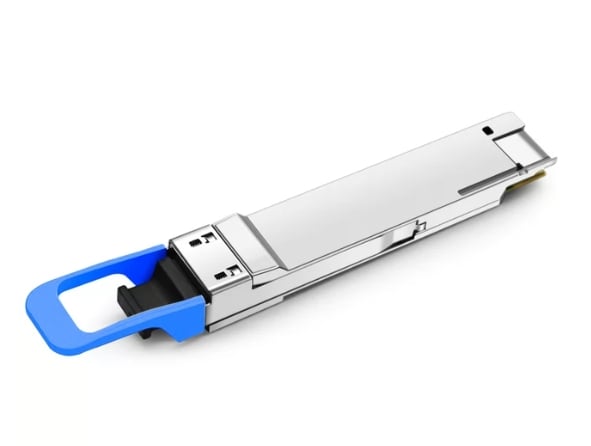
Understanding the QSFP-DD Form Factor
The QSFP-DD (Quad Small Form-factor Pluggable Double Density) form factor is a higher capacity, faster network application designed to improve the previous version of the QSFP. With up to 16 electrical lanes, this connector can support individual speeds of 25 Gbps, allowing for total rates as high as 400 Gbps. Furthermore, it is compatible with earlier models like the QSFP28, making it useful in infrastructure where many different types of devices exist. Since it takes little space within data centers while also reducing cabling complexity but still providing excellent performance in high-density situations, a compact design is perfect for such settings.
Key Features and Specifications of QSFP-DD Transceiver solutions like 100g qsfp28 and 400g qsfp-dd are integral components in modern network infrastructures.s
Like 100g qsfp28 and 200g qsfp28-dd, QSFP-DD transceivers are developed to meet high-speed data transmission requirements in today’s data centers. Some of their key features include:
- High Data Rate Support: Each QSFP-DD transceiver has sixteen electrical lanes supporting up to 400 Gbps of data throughput, making it suitable for bandwidth-intensive applications. It also works well with existing 100g qsfp28 and sfp28 interfaces.
- Backward Compatibility: The QSFP-DD transceiver is designed to work seamlessly with legacy QSFP28 and QSFP+ systems, thereby safeguarding investments made on previous technologies while promoting easy integration into outdated infrastructures.
- Enhanced Thermal Management: This device uses advanced thermal management technologies to ensure reliable performance at higher power dissipation levels, which is essential for high-performance networking. This ensures better cooling capabilities without compromising reliability.
- Wider Application Range: A versatile component within any network architecture, these devices can support a wide range of different applications, such as data center interconnects (DCIs), high-performance computing (HPC), or enterprise networking solutions.
- Reduced Cabling Complexity: Enabling increased data rates within a smaller form factor size not only saves space but also simplifies cabling needs, which improves overall network efficiency.
As scalable connectivity solutions offering superior performance, all these factors combined make them an attractive option for organizations looking towards future-proofing their infrastructure upgrades where necessary.
How QSFP28-DD Improves Data Rate and Throughput
Like the improvements in the 200g qsfp56 and 400g qsfp-dd modules, QSFP28-DD transceivers enhance data rates and throughput with several futuristic designs. They employ a high-density connector system that uses four independent channels of up to 28 Gbps each for an impressive 100 Gbps per transceiver. This increases data throughput and enhances bandwidth utilization for applications requiring large amounts of data. Furthermore, innovative signal integrity methods and low-latency protocols ensure dependable transfer with minimal packet loss. These enhancements work together to improve performance in high-bandwidth situations, making them essential in modern high-speed networks.
QSFP-DD vs. QSFP28: What Are The Main Differences?
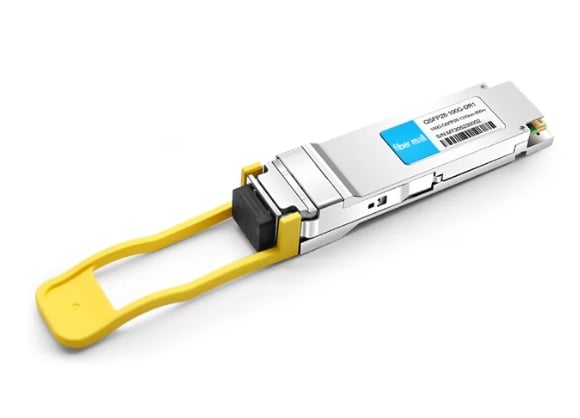
Differentiating Form Factor and Connector Types
The main differences between QSFP-DD (Quad Small Form-factor Pluggable Double Density) and QSFP28 (Quad Small Form-factor Pluggable 28) are their form factor and connector capabilities. The wider design of QSFP-DD, which has more pins than QSFP28, can accommodate a higher density of connections. This means that a transceiver that uses this type of connector can support up to 400 Gbps instead of only 100 Gbps for one using the other type.
About connectors, there is a 38-pin interface in QSFP-DD modules that allows backward compatibility with QSFP28 through an adapter. In other words, while it is possible to plug a module designed for use with a qsfp28 port into a qsfp-dd slot, the opposite situation will not work. The next-gen high-speed data networks require better electrical performance and signal integrity than previous designs – so this improved connector design does just that. These factors are essential for organizations when choosing transceivers as they want their infrastructure future-proofed against obsolescence.
Comparing Data Rates and Bandwidth
The contrast between QSFP-DD and QSFP28 becomes more pronounced when we look at data rates and bandwidth capabilities. It’s designed to run data rates as high as 100 Gbps per channel for short-distance high-speed transmission applications. Conversely, QSFP-DD reaches a maximum data rate of 400 Gbps through four lanes that each carry 100 Gbps or two lanes that carry 200 Gbps each, sharing some features with both 200g qsfp28-dd and 400g qsfp-dd. As such, it is well suited for high-volume data transfer enclosures like data centers or HPC environments using 400g qsfp-dd optics where greater bandwidth is required. In addition, the ability to aggregate channels in its design means higher throughput and efficiency in data-rich applications. Consequently, companies must consider their bandwidth requirements when choosing between these two types of equipment to maximize the performance of their network systems.
QSFP-DD vs. QSFP28: Power Consumption
Power consumption is an important factor when deciding between QSFP-DD and QSFP28 modules. In general, the power consumption of a QSFP28 module is about 3.5 watts per 100 Gbps channel, which makes it more efficient for applications where energy efficiency matters most. On the other hand, though they can support data rates up to 400 Gbps, this module type uses slightly higher electricity levels at around four to five watts per channel, depending on its specific implementation and workload characteristics. Such extra power usage may be warranted in situations with high demand when compared with the additional costs associated with energy consumed by QSFP-DDs that have superior throughput capabilities; thus, organizations should consider such transceivers based both on their performance requirements as well as goals related to efficiency to find out which one will work best within their network infrastructures.
How Do QSFP56 and QSFP28-DD Compare?
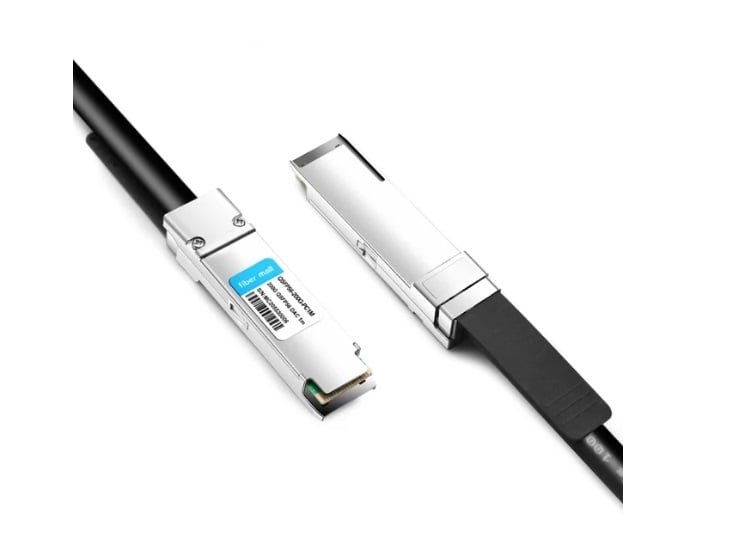
Technological Advances in QSFP56 and QSFP28-DD
Regarding optical transceiver technology, the addition of QSFP56 and QSFP28-DD are huge steps forward due to the need for increased capacity. At 200 Gbps, QSFP56 uses PAM4 (Pulse Amplitude Modulation), which allows it to send twice as much data per signal as older generations like NRZ (Non-Return to Zero) used in previous versions such as QSFP28. This technique uses existing fiber infrastructure, thus offering an economical alternative for data centers looking to increase their capabilities.
Conversely, QSFP28-DD builds upon the functionality of its predecessor by enabling two 100 Gbps channels to be combined into one module to support up to 400 Gbps while still being compatible with current standards. The design improvements made to the device enhance cooling efficiency and increase signal integrity compared to earlier models, which could not perform well under heavy loads due to thermal issues. These two products meet the requirements associated with high-performance networking to facilitate reliable data transfer within demanding environments.
Comparing Data Center Applications
To determine whether QSFP56 or QSFP28-DD is more suitable for data centers, it’s important to look at their performance features, compatibility, and operational efficiencies. For ultra-high-bandwidth environments like large-scale cloud computing data centers and high-frequency trading facilities, the choice of a transceiver becomes critical. Here, QSFP56 shines as it supports 200 Gbps per port via PAM4 modulation, thereby maximizing existing infrastructure while enabling massive data throughput.
On the other hand, QSFP28-DD offers versatility by allowing operators to upgrade to 400 Gbps without completely overhauling their infrastructure by utilizing 400g qsfp-dd technology. This feature is handy in facilities that want to meet current needs and prepare for future scaling requirements. In addition, having backward compatibility with QSFP28 modules ensures easier transitions, making this module ideal for organizations that aim to optimize investments while improving network performance.
Both modules are expected to improve interconnections within networks and efficiently handle increasing amounts of data traffic passing through them. Ultimately, choosing between these two types of equipment comes down to specific application requirements such as bandwidth demand, infrastructure compatibility, and an organization’s overall network strategy.
Compatibility and Interoperability of QSFP Modules
Data center operators must consider the compatibility and interoperability of QSFP modules like 100g qsfp28 and 200g qsfp56 while selecting the best solution for their network needs. These modules are built to be flexible, meaning they can work with multiple protocols such as Ethernet or InfiniBand. Typically, both QSFP28 and QSFP56 are backward-compatible with previous versions, including but not limited to QSFP+, SFP+, and SFP, which allows easy integration into current systems without requiring a complete changeover.
The use of standardized connectors along with signaling techniques also enhances interoperability since it makes connections possible across equipment from different manufacturers. Organizations should check specific interoperability statements manufacturers provide because not all types of these modules may support similar protocols or features. Moreover, active optical cables (AOCs), as well as direct attach copper cables (DACs) that meet the requirements set out for these standards, enhance flexibility in cabling options, thereby allowing various technologies within one architecture. Data centers can effectively manage their transition towards higher bandwidths using resources such as 200g QSFPS56s without incurring huge costs on new infrastructure investments.
What Are The Benefits of Using QSFP28-DD for 200G Ethernet?
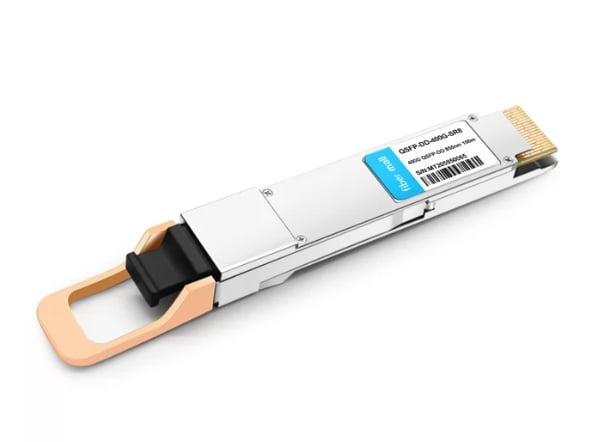
Advantages in Data Rate and Bandwidth
The QSFP28-DD (Quad Small Form-factor Pluggable 28 Double Density) module provides several important data rates and bandwidth benefits, especially for 200G Ethernet applications. First, it employs cutting-edge signaling techniques and optimized electrical interfaces to increase the capacity from 100G to 200G by doubling the bandwidth of previous generations of QSFP28 modules. Therefore, this increased capacity allows more data to be transmitted at higher speeds, which is necessary in today’s rapidly growing data centers with high traffic volumes or when integrating with 400g qsfp-dd technology.
Also, single-mode and multi-mode fiber connections are supported by the QSFP28-DD module, which increases its flexibility during deployment situations. Its eight times twenty-five Gbps electrical interface makes it compatible with current infrastructure while providing an easy migration path toward faster speeds. In addition, better thermal management enables performance maintenance under heavy loads, thus improving overall reliability and efficiency within networks.
In conclusion, organizations looking to cope with increasing bandwidth demands and position their network architecture for future growth should consider adopting QSFP28-DD modules since they represent a strategic move toward meeting these requirements.
Enhanced Density and Scalability
The QSFP28-DD module gets more connections per square meter in data centers. This is achieved by a double-density design that provides up to 400G of aggregate bandwidth in a standard 1U space, thus maximizing physical rack space utilization. Organizations must increase port density without expanding their physical footprint, which is critical.
Another important aspect of evolving network demands is scalability. The QSFP28-DD’s design allows for seamless upgrades so data centers can scale infrastructure incrementally over time. Operators can, therefore, accommodate continuously increasing bandwidth requirements by managing upgrades efficiently as they respond to variable data traffic levels without having to overhaul existing systems completely. Thus, the QSFP28-DD module should be seen as a strategic investment in an organization’s networking capabilities since it guarantees long-term growth and adaptability within fast-changing technology environments.
Improved Power Efficiency and Thermal Management
The QSFP28-DD module is designed with sophisticated power-saving features that reduce energy usage, reducing operational costs within the data center. The module’s innovative design allows it to have a better power usage effectiveness while still working at high levels resulting in maximum energy efficiency without affecting throughput. Advanced heat management technologies are used to ensure that heat is dissipated properly as this is critical in maintaining performance during heavy data processing.
To optimize airflow and use thermal sensors, the QSFP28-DD controls its temperature and prevents overheating, thus increasing the life span of hardware components. This efficiency not only boosts network reliability but also facilitates compliance with environmental standards making it sustainable for companies seeking to reduce their carbon footprint. Power-saving improvements combined with efficient thermal management make QSFP28-DD an essential component in supporting modern data center needs while ensuring sustainable business practices.
How Does QSFP28-DD Support 2x100G Networks?
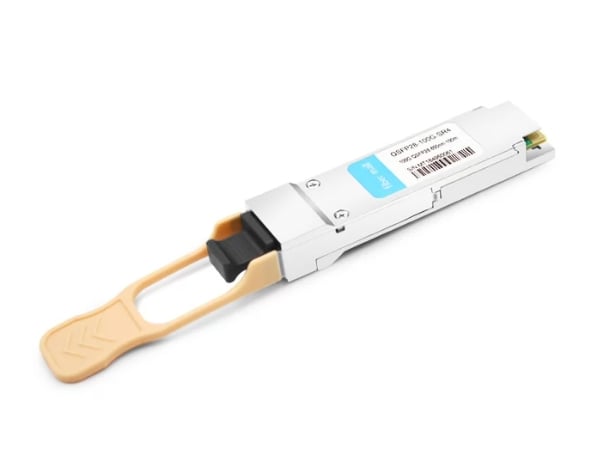
Exploring the 2x100G QSFP28-DD Capability
The innovative design of the QSFP28-DD module doubles interface density allowing it to support 2x100G networks. Compared to traditional QSFP28 modules, this advanced capacity enables two 100G links to run concurrently over a single physical interface, thus increasing bandwidth usage while minimizing space and cabling requirements. To meet the rising need for data throughput in modern data centers, a high-performance electrical interface that ensures signal integrity supports dual connection architecture.
Moreover, using cutting-edge signal processing technologies improves data integrity and reduces latency, thereby guaranteeing optimal performance in different networking environments. Such capabilities are very important for cloud service providers and enterprises seeking to scale their networking infrastructure without compromising on quality service delivery. The QSFP28-DD module allows seamless interoperability with current 100G equipment, giving not only an affordable upgrade pathway but also enabling organizations to position themselves for quick adaptation to future network demands.
Use Cases for 2x100G Interconnections.
2x100G interconnections using the QSFP28-DD module have various applications in different industries, primarily due to the need for higher bandwidth and better data handling.
- Data Centers: In high-density data center environments, operators can scale bandwidth efficiently by implementing 2x100G interconnections without having to change many cables. This is especially helpful when large-scale virtualization and cloud computing workloads require fast data processing and low-latency communication.
- Telecommunications: 2x100G technology improves telecom companies’ infrastructure by helping them manage higher traffic volumes in support of 5G networks. The ability to connect two devices at once ensures that service remains uninterrupted while allowing room for changes in user needs.
- Financial Services: High-frequency trading and real-time analytics are impossible without 2×100 G connections within the finance sector. These links provide low latency with high throughput, enabling firms to respond quickly to market shifts and thus making them competitive in a fast-paced environment.
Critical applications such as these are supported by 2×100 G connections that not only enhance operational efficiency but also give strategic advantages over other organizations where decisions based on data play a key role.
Implementing Breakout Cables with QSFP28-DD Modules
The use of breakout cables with QSFP28-DD modules in networking environments creates versatile connectivity options and optimized bandwidth allocation. A single QSFP28-DD port can be connected to multiple lower-speed interfaces through a breakout cable, which is needed for different applications such as those using 100g qsfp28 and sfp28.
- Configuration: When implementing a breakout cable, port assignments must be carefully planned to ensure that bandwidth is efficiently allocated according to device needs. Typically, each QSFP28-DD breaks out into four 25G SFP28 or four 10G SFP+ ports, which allows for deployment-specific configurations.
- Standard procedures should guide the installation of 100g QSFP28, DAC cables, and 400g QSFP-DD modules for optimal performance.: Cable management during installation is critical in preventing signal interference while ensuring proper air circulation within racks. Proper labeling, along with documentation, plays an important role in future scalability as well as troubleshooting by making it easy for technicians to identify connections and port assignments.
- Performance Considerations: When selecting breakout cables, it’s crucial to consider maximum transmission distances and supported media types. A long-distance fiber optic connection is preferred due to its low signal loss, but copper wire may also be used over short distances where cost and performance need to be balanced.
In summary, the implementation of breakout cables with QSFP28-DD modules enhances organizational flexibility and network efficiency. These modules cater to high-bandwidth, low-latency applications across growing industries.
Reference Sources
Frequently Asked Questions (FAQs)
Q: What’s QSFP28-DD? And how does it differ from standard QSFP28?
A: The Quad Small Form Factor Pluggable Double Density (QSFP28-DD) is an optical transceiver that doubles the density of a QSFP28 and provides higher data rates. Standard QSFP28 supports up to 100G, but QSFP28-DD can support 200G with potential scaling to 400G using PAM4 modulation.
Q: What are the main characteristics of the QSFP28-DD form factor?
A: This design features double density, greater speed capabilities, and backward compatibility with existing interfaces of the QSFP28. It uses both NRZ (non-return to zero) and PAM4 (four-level pulse amplitude modulation) signal types, which allows for efficient handling of higher data rates.
Q: Why is such importance placed on the MSA of a QSFP-DD?
A: The Multi-Source Agreement for a QSFP-DD (QSFP-DD MSA) outlines standards regarding these modules to be compatible between different manufacturers. These modules define mechanical, electrical, and thermal performance specifications for smooth integration into various networking equipment.
Q: Can I use my standard qsfp28 module in the same port as my qsfpdd module?
A: Indeed, yes! A port designed for use with a QSPFDD transceiver can also accommodate other types like regular qsfps or even their bigger brothers – the qsf+. This feature protects network operators’ investments toward previous infrastructure while gradually enabling upgrades to higher-speed devices, such as those powered by QPSFDDs over time.
Q: What kind of data rates can be supported by the AQOFSQPDD?
A: Data center interconnects through speedier aggregation points at networks can all benefit from different speeds provided by this type of device, including, but not limited to, 100Gbps/200Gbps/400Gbps, respectively, according to what best meets demand within the said environment(s).
Q: In what ways does QSFP28-DD achieve higher data rates than QSFP28?
A: PAM4 modulation is used by QSFP28-DD to increase data rates without increasing bandwidth. This effective electrical interface and technology allow the QSFP28DD to handle rates as high as 400G, which is similar to the capabilities of a 400g qsfp-dd.
Q: Where are commonly used applications for QSFP28-DD modules?
A: These modules are widely used in data centers, high-performance computing (HPC) environments, and telecom networks. They’re great for tasks that require high bandwidth, such as 200G and 400G Ethernet optical interconnects or cloud services.
Q: How do you differentiate between the three types of connectors – qsfp28, qsfp56 and psfp28dd?
A: The difference lies in their maximum supported speeds. Qsfp28 can support up to 100G, while qsfps56 supports up to tp200g, but psfpspd will go up to 400 Gbps. Qsfp28 uses mainly NRZ modulations, whereas Qsfp56 employs PAM4 modulations at higher frequencies.
Q: Are the standards adhered to by these modules?
A: Yes, indeed! These optical transceivers have been designed according to ieee802 .3bs, among other relevant compliance requirements. This certification guarantees they meet industry expectations regarding performance interoperability, reliability, etc.
Q: What advantages does a user have when using this particular type of optical transceiver over others available on the market today?
A: There are many benefits associated with such a decision, including increased speed and size backward compatibility like those found within 200g qsqp-dd. All these features make it suitable even within modern data centers where space may be limited. Thus, their very nature makes power critical, too, so its pluggable design simplifies upgrades/maintenance, further enhancing usability across different environments.
